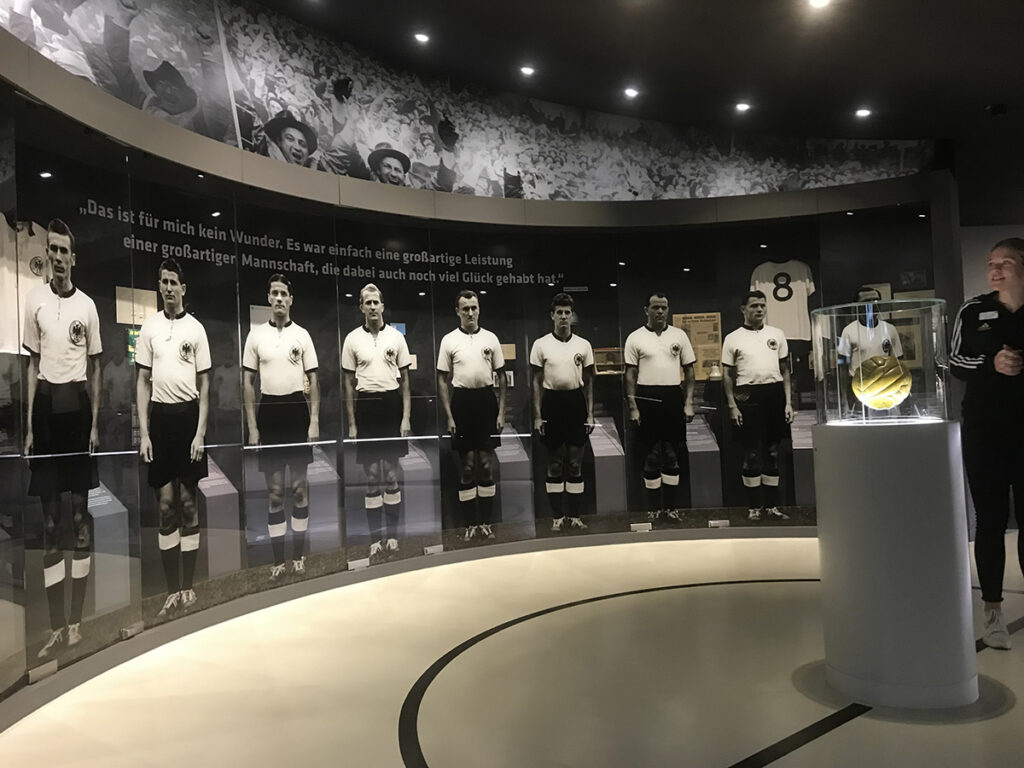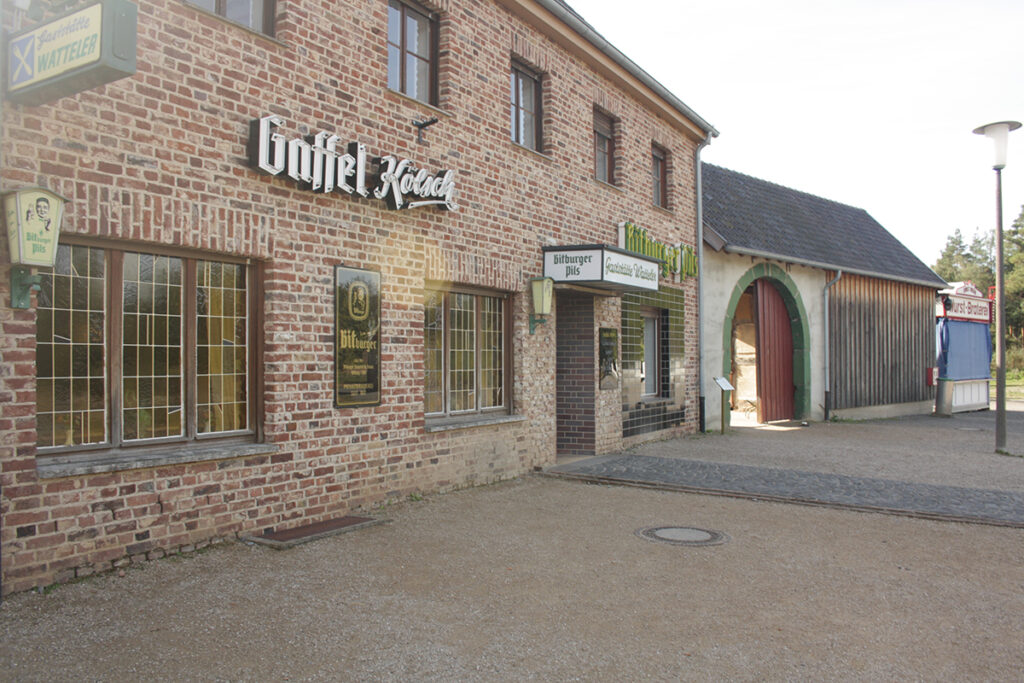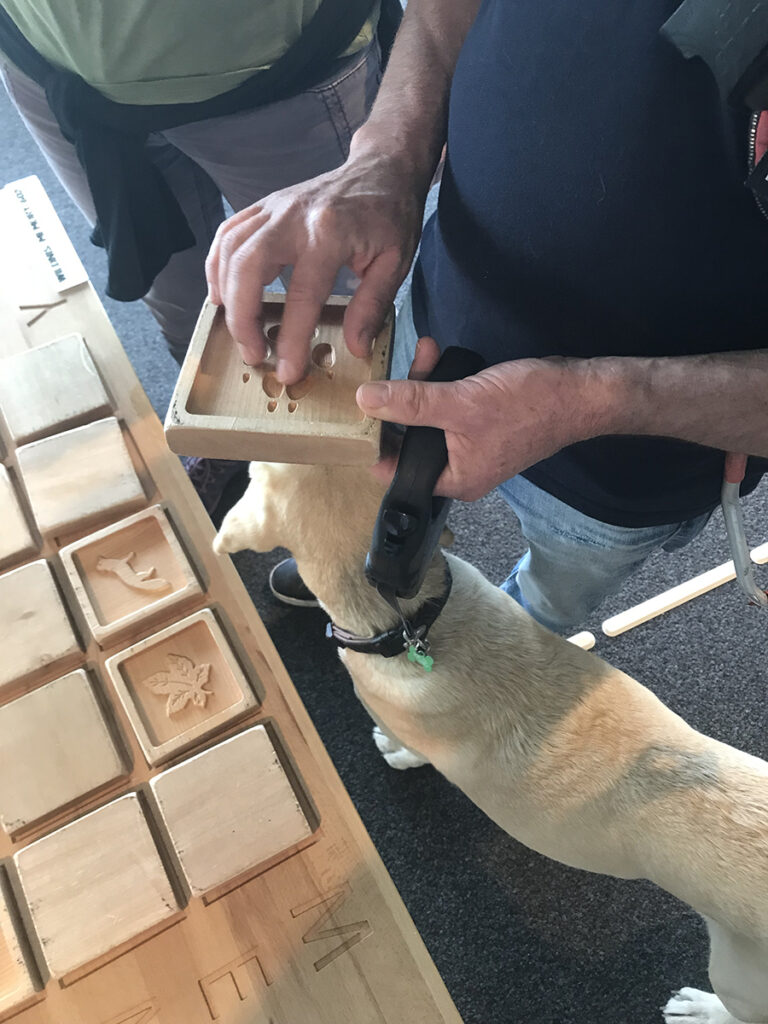‘Barrier-free travel’ is the term used in Germany to describe destinations and attractions that are broadly accessible. Able Magazine was invited to see what’s available for disabled tourists in the North Rhine-Westphalia region.
Cologne
Cologne is a handsome city in the west of Germany and easily reached from the UK with a flight time of around one hour from Heathrow.
Despite the travails of the twentieth century, much of Cologne retains a medieval character.

Cologne Cathedral
Cologne has 12 Romanesque churches, but these are very much second tier to the cathedral. Not only is it one of the tallest cathedrals in the world, it has the third highest vaulted ceiling of any church in the world.
Construction started in 1248 as a place to house the relics of the Magi (aka the Wise Men or Three Kings from the Nativity story) and was finished in 1880 – with the magnificent golden shrine installed towards the eastern end of the building.
It’s not all about religion, however. Naturally, the building has developed over the centuries, with one of the highlights for visitors the windows designed by contemporary German artist, Gerhard Richter; more spiritual than religious.
The cathedral is unsurprisingly huge, with wide level access (except for the crypt). Expect it to be busy, and in parts, noisy, since it’s on page one of most tourist guidebooks and attracts around six million visitors every year. That said, it’s also worth saying that churches always have an atmosphere and sensory appeal, augmented with light, song and music that mean they are often quite calming amidst a busy city the size of Cologne.
Happily, it’s such an impressive landmark that you’d struggle to get lost in Cologne.
Visit: www.koelner-dom.de/en

Riverside
The mighty river Rhine is the reason Cologne exists at all. Enjoy a stroll along the broad bankside pathway, shared with walkers, cyclists and skaters.
Able Magazine stayed at Ameron Köln Hotel Regent Visit: www.ameroncollection.com
Dortmund
Dortmund is the third-largest city in North Rhine-Westphalia and is considered a centre for commerce and culture.

German Football Museum
Germany have won the World Cup four times, and you can see the ‘original replicas’ of the trophies given to the German teams after their respective victories – and get to handle an unofficial replica as you make your way past the real thing.
This could be the ultimate warm-up if you’re travelling to watch the European Championships in Germany next year.
The exhibition relates the emotions shared by football fans in a vivid interactive display including traditional football artefacts and innovative life-size 3d cinematic displays.
Accessible on both floors, with displays placed at sympathetic height, this is a vibrant museum packed with sound and colour.
Visit: www.fussballmuseum.de/en/start

The Zollern Colliery
You might think that a disused colliery would be dreary and dirty but in fact, this large scale museum complex elevates the coal mining industry to a point of pride.
The brick buildings are curiously charming and some, such as the engine house even boast elaborate art nouveau glass and iron work – all, of course, in complete contrast to the darkness of the coal mines that have now been sealed off.
That said, it’s still possible to get a sense of the place and the people that worked here when it was at its most industrious. The miner’s train now rattles around a circuit above ground and gives a sense of the raw industrial conditions the mineworkers faced.
Exhibitions in changing rooms of clothing and equipment speak heroically of hard physical labour of by-gone years, in the shadow of vast but redundant mining headstocks.
The site is largely accessible, using alternative entrances and so on in several of the buildings for wheelchair users. You’ll also find tactile objects among the exhibitions.
The museum will loan walkers and wheelchairs free of charge and there are fold-out chairs to rent – though there are seats dotted around the site.
Visit: www.zeche-zollern.lwl.org/en/

Eifel National Park
Kommern LVR- Freilicht Museum
This is an open air museum on the edge of the Eifel. You’ll find 79 historical buildings relocated to a collection of ‘villages’ representing different periods in German domestic history, from as far back as the end of the 15th century.
While some of the older buildings aren’t fully accessible for wheelchair users, the more modern buildings, from the twentieth century, are much easier to navigate, though it’s still possible to enjoy each collection since the open air invites atmosphere through birdsong and the smells of the countryside – as well as tactile objects to enjoy.
Cobbled surfaces can be a bit challenging but it’s worth persevering to get from one part of the site to the next.
Visit: www.kommern.lvr.de/en/startseite/startseite.html

Eifel National Park Centre
In 2004 an 11,000 hectare area between Aachen, Cologne and Bonn was allocated to create a ‘virgin forest of tomorrow’. Scientists are aware of 10,000 animal, fungi and plant species in the area, though almost a quarter of these are endangered or threatened with extinction.
The centre is on the site of the former Vogelsang site, that was originally opened in the 1930’s by the National Socialist Party to inspire Nazi ideology. While a fascinating exhibition details that fortunate failure, the ‘Dreams of Wilderness’ exhibition is the real attraction for people looking for a brighter world.
The interactive exhibition explores different habitats and animals in imaginative ways such as through games, film, models and digital displays. Indeed, perhaps because it has so many sensory and tactile displays, it’s a winner for families too. Anybody from the age of two upwards will love spending time here.
The word ‘Vogelsang’, incidentally, means ‘birdsong’ in English.




